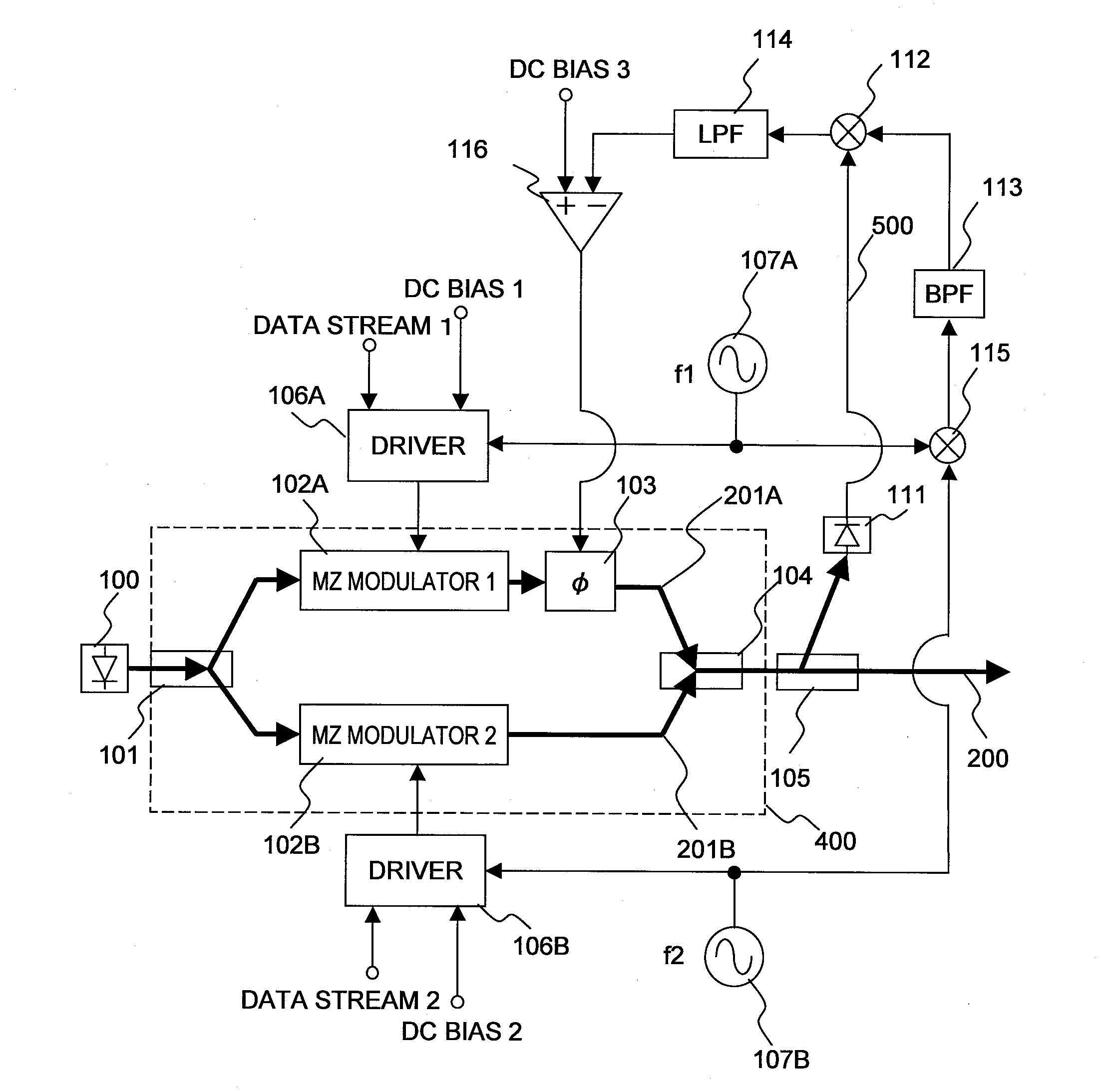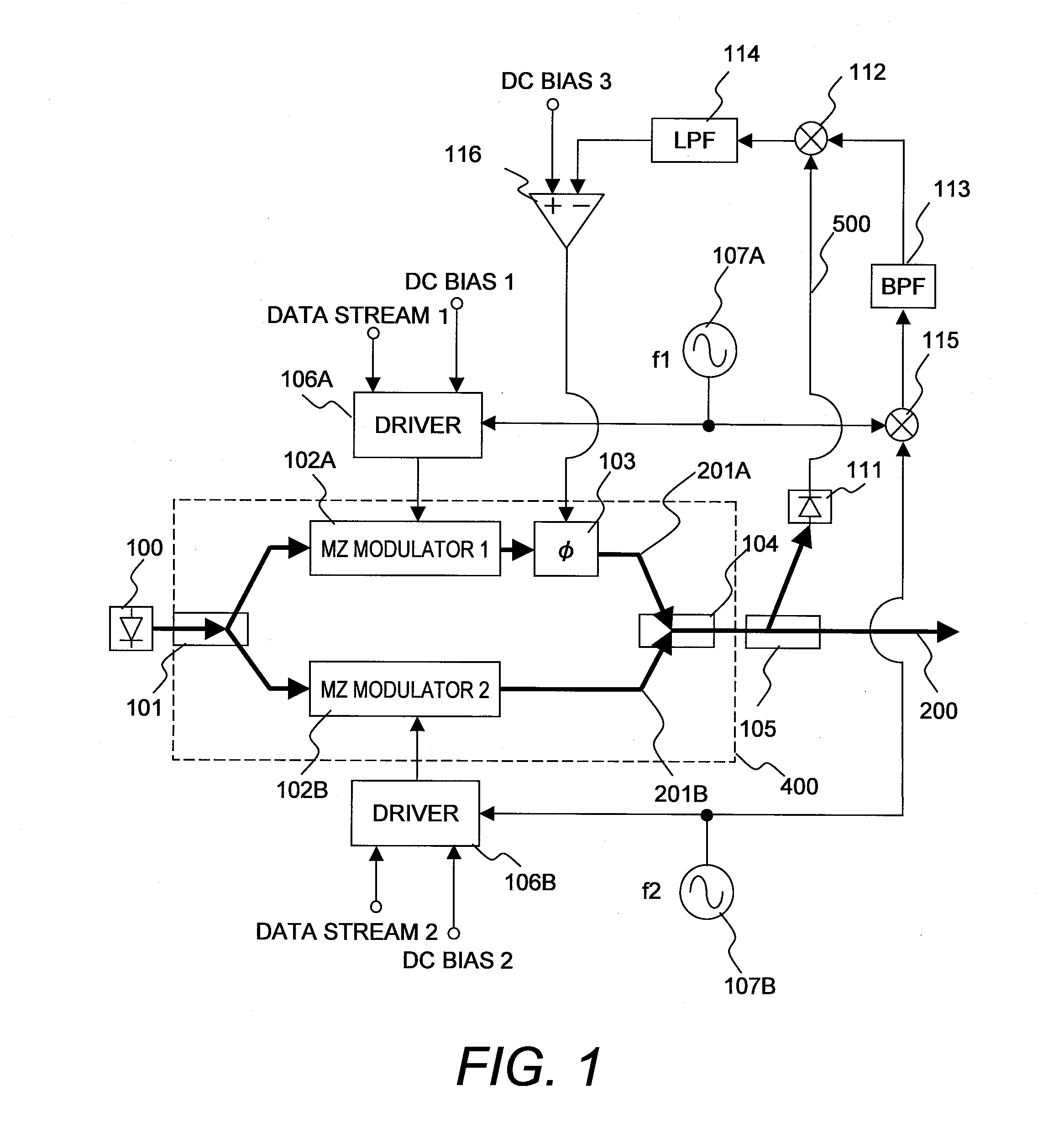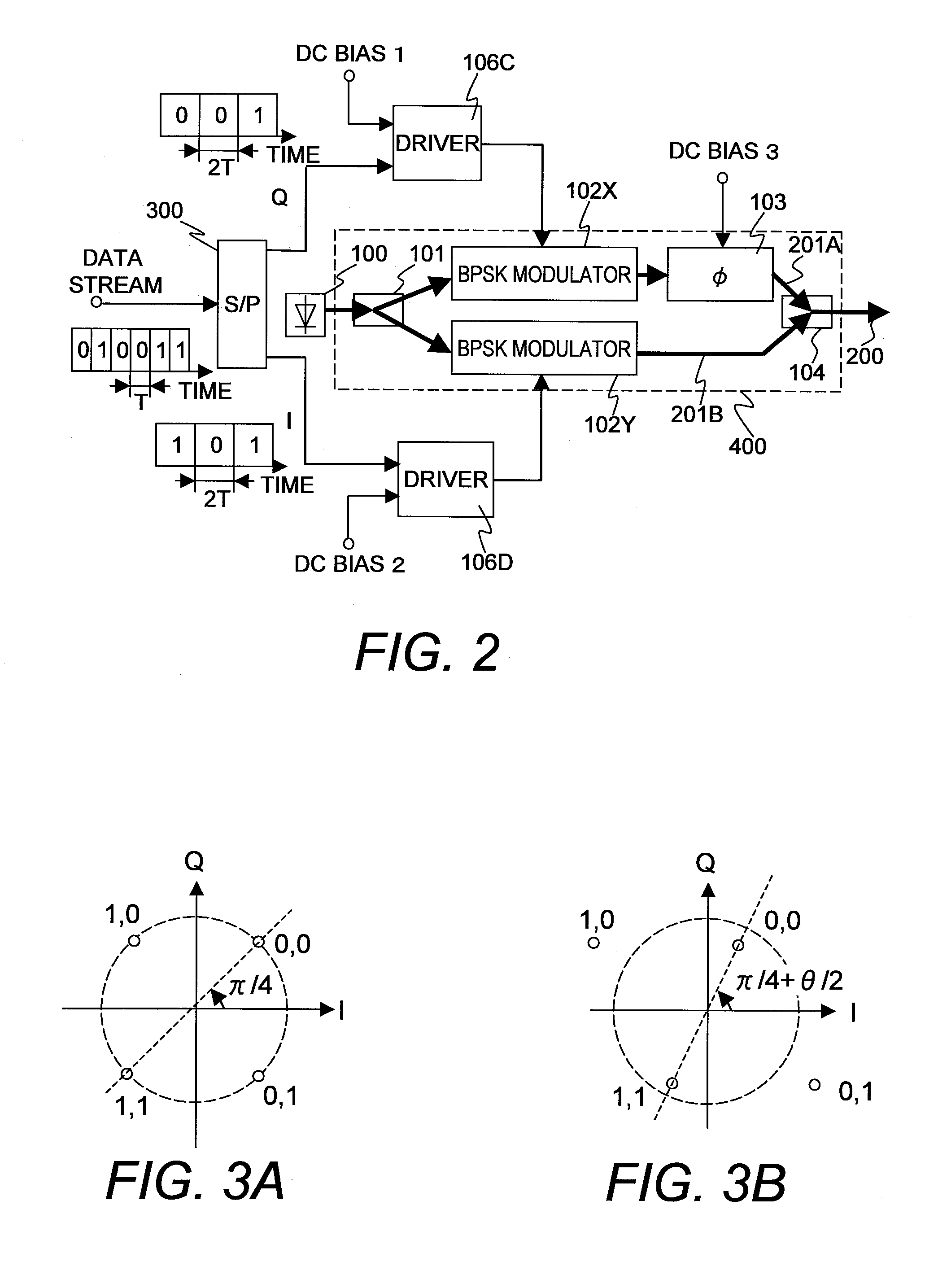Control method for optical phase modulation
a control method and optical phase technology, applied in the field of optical communication, can solve the problems of inability to apply conventional technology to optical modulators, inability to apply intensity modulators but cannot apply to optical qpsk modulators, and low two-photon absorption probability, so as to stabilize the operation stabilize modulation characteristics, and stabilize the effect of optical qpsk modulators
- Summary
- Abstract
- Description
- Claims
- Application Information
AI Technical Summary
Benefits of technology
Problems solved by technology
Method used
Image
Examples
embodiment 1
[0047]Firstly, an optical QPSK modulator of a first embodiment according to this invention is explained with FIG. 1.
[0048]Continuous light outputted from a laser 100 is branched into two streams with a 1:2 optical coupler (with one input and two outputs) 101. The branched light is inputted into MZ modulators 102A and 102B respectively. The MZ modulator 102A modulates the phase of the light to “0” and “π” in accordance with the digital signals “0” and “1” of an information data stream 1.
[0049]A driver 106A converts the information data stream 1 into a drive voltage pulse stream so that the MZ modulator 102A may operate as a phase modulator. The driver 106A adds a DC bias 1 to the drive voltage pulse stream. FIG. 5 shows concrete setting of a voltage amplitude and a DC bias. Further, the driver 106A applies amplitude modulation to the drive pulse stream with the signals of frequency f1 outputted from an oscillator 107A. The frequency f1 is set a frequency sufficiently lower than the b...
embodiment 2
[0067]A second embodiment will be described hereinafter. The second embodiment has the same circuit configuration of the optical QPSK modulator as that of the first embodiment but the method for applying amplitude modulation to drive voltage signals of the MZ modulators is different. More specifically, the relationship between drive voltage signals and a modulation characteristic of an MZ modulator in the second embodiment is shown in FIG. 9.
[0068]In the second embodiment, the phase of the amplitude modulation at the drive voltage signal level where the phase of light is “0” (V1−V2=0 in FIG. 9) is identical to the phase of the amplitude modulation at the drive voltage signal level where the phase of light is “π” (V1−V2=2Vπ in FIG. 9). Note that, in the aforementioned first embodiment, the phases at the drive voltage signal levels in the cases of “0” and “π” are opposite as shown in FIG. 8.
[0069]In the case of the second embodiment, the intensity of the difference frequency component...
embodiment 3
[0071]A third embodiment will be described hereinafter. The third embodiment is hereunder explained with FIG. 10. In the third embodiment, unlike the aforementioned first embodiment, the drift phenomenon of the modulation characteristics of the two MZ modulators is compensated by using low frequency signals (frequencies f1 and f2) outputted from the two oscillators 107A and 107B.
[0072]More specifically, in the drive voltage signals applied to the two MZ modulators 102A and 102B, similarly to the aforementioned second embodiment, the phases of the amplitude modulation of the low frequency signals (frequency f0) applied to the drive signal level of phase “0” and the drive signal level of phase “π” shown in FIG. 9 are identical. In the case of the third embodiment, as shown in FIG. 11, when the modulation characteristics of the MZ modulators 102A and 102B drift, amplitude modulation of the frequency f0 is applied to the light outputted from the MZ modulators 102A and 102B. When the bia...
PUM
 Login to View More
Login to View More Abstract
Description
Claims
Application Information
 Login to View More
Login to View More - R&D
- Intellectual Property
- Life Sciences
- Materials
- Tech Scout
- Unparalleled Data Quality
- Higher Quality Content
- 60% Fewer Hallucinations
Browse by: Latest US Patents, China's latest patents, Technical Efficacy Thesaurus, Application Domain, Technology Topic, Popular Technical Reports.
© 2025 PatSnap. All rights reserved.Legal|Privacy policy|Modern Slavery Act Transparency Statement|Sitemap|About US| Contact US: help@patsnap.com



